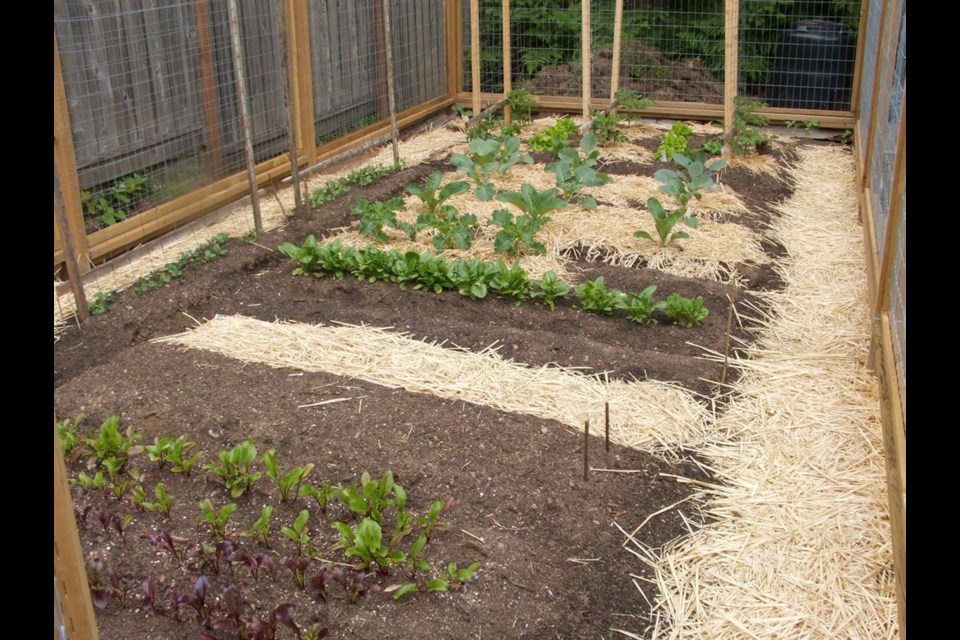As I was revelling in gratitude at a long-awaited haircut, I asked the hairdresser about what she did while the salon was closed. Did she get a rest?
Her reply: “I never worked so hard in my life.” Turns out Jackie and her partner used the weeks at home creating vegetable beds. She rattled off all the seeds and transplants that were up and growing in their new food garden. “And we got chickens,” she added.
I’ve observed a similar enthusiasm in my neighbour Tanya as I’ve watched her set up and plant an entirely new food garden. At one point last month she commented that, though she lamented the illness and insecurity these times have brought, she has found this period of being entirely at home and gardening to be “really nice.” She could even imagine her large property hosting chickens, and maybe a goat or two.
Over the past few years, since they moved in, Tanya and her partner have taken an old, overgrown front garden and turned it into a lovely landscape filled with interesting young plants.
This year, as the virus surfaced, they decided it was time to add a vegetable garden. When Tanya’s partner was home for a week on leave from coast guard duty, they built a wood frame enclosure with wire walls for the vegetable plot.
Tanya put a major effort into preparing the soil before seeding and transplanting. Realizing that the ground in our area is basically a sand pit liberally laced with rocks, she actually sieved through the plot, removing rocks and debris. Then she limed the soil and added fertilizer and a generous layer of a compost she found at a local recycling and waste disposal service. The rich material is made by composting vegetable waste from the region’s grocery stores.
The extra effort put into creating a fertile, humus-rich soil has paid off. Tanya instinctively knew that only a high quality soil can yield robust food plants and vegetables that are full-flavoured and nutrition-dense.
Early in May, I visited Tanya to find transplants and seed packets arranged on the lawn beside the enclosed vegetable plot, which was ready for planting. A few plants, still in pots, had been set in their prospective sites.
We discussed the placement of various plantings. I suggested that, to save space, she could grow the beets and carrots in “block” plantings of closely spaced rows. A rich soil can support such concentrated plantings.
Just two weeks later, I returned to find an already flourishing fledgling food garden. Peas had emerged along the far, long side of the wire enclosure. Beets were up and growing beside germinating carrots. A row of spinach was looking good, as was a grouping of kale, cauliflower, broccoli and cabbage.
At the far end, tomatoes were growing against three extra supports, accompanied by perky young lettuces. In one of the corners of the enclosure at that end, Tanya has planted spaghetti squash, In the other corner she seeded pole beans.
At the near end, peppers grew under a heat-gathering hard plastic dome — one of many that Tanya found had been left on the property when she moved in.
I’m more than impressed with the transformation of that long neglected property. And it is supremely gratifying to see another person so entirely absorbed in producing her own fresh, nutritious food.
June. Long days, warming weather, flowers and fragrance, sunshine, strawberries and roses. What’s not to like about June — even this year, when it will be sweeter than ever to putter in our gardens and find other uncrowded places outdoors to explore safely and enjoy. A few tips for garden-tending this month:
• Conserve vitamins in strawberries by washing them with the stems still on. Try dipping them into sour cream and then into brown sugar.
• As the weather warms, mow lawns a little on the high side (six to seven cm) to protect plant crowns from burning and to help shade out germinating weed seeds.
• Hill up potatoes with soil or straw to protect any tubers near the surface from turning green in the sun.
• Mulch vegetable plantings with compost or straw, or both, to conserve moisture in the soil.



